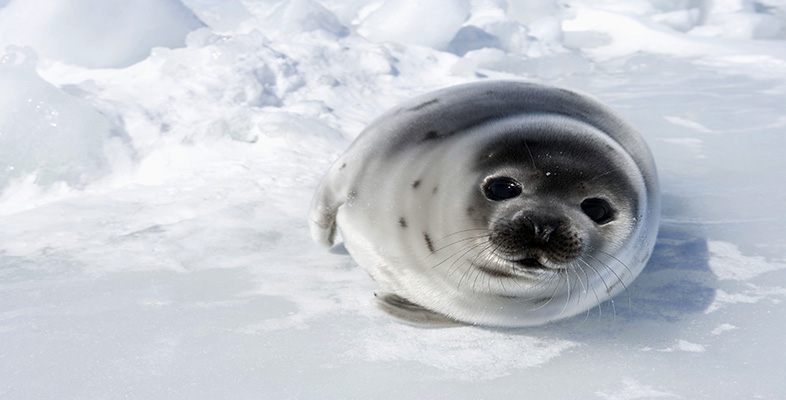1 Polar biology
1.1 Preamble
This course is about animals' structural and physiological adaptations to living permanently in cold climates; hibernation, a special response to transient or seasonal cold, is described in the OpenLearn course Animals at the extremes: hibernation and torpor (S324_2). Living in a polar climate involves adaptations of many physiological systems: appetite, diet, energy storage and reproductive habits as well as thermoregulation. In many cases, such changes involve ‘ordinary’ physiological mechanisms being pushed to extremes. The study of such physiological adaptations can help us to understand how humans and domestic animals could cope with similar conditions that arise under artificial or pathological conditions. For example, obesity is rare among wild animals, even when food is very plentiful, but in humans, the condition is common and often leads to numerous physiological complications, ranging from susceptibility to diabetes to mechanical damage to legs and feet. Most naturally obese animals occur in cold climates, and there is no evidence that they suffer from the complications of the condition that are observed in people and their domestic livestock. Perhaps we have something to learn about the natural regulation of appetite and the organization and metabolic control of fat from these cold-adapted species that have evolved ways of combining fatness with fitness.
On the evolutionary time-scale, modern polar environments, and hence living species of polar organisms, evolved relatively recently. The study of polar organisms provides the opportunity to study physiological adaptations of quite recent origin that evolved in organisms which were already complex and well-integrated. Such changes are comparable to artificial evolution in domestic animals, whether by manipulation of the genome (i.e. intensive artificial selection, gene transfer, etc.), or by drastically altering the diet and husbandry conditions. Polar organisms may help us to under-stand the physiological and psychological implications of the rapid, often drastic changes that we impose upon our own lives and those of our domestic animals.
Antarctica has been isolated from other continents since the Mesozoic supercontinent Gondwanaland broke up and the fragments that became India, Australia and New Zealand drifted away. The rich fossil record in Antarctica shows that a diverse tropical fauna, including early eutherian and metatherian mammals, once lived there. As the continent became colder, many species disappeared and adaptations to the climate evolved in situ in surviving lineages over many millions of years. Consequently, many of the organisms of Antarctica and the surrounding oceans are endemic.
In contrast, much of the Arctic is a large ocean, connected to the Pacific Ocean by the Bering Strait (that became a land bridge several times during the last million years) and through wider channels to the north Atlantic Ocean.
When used as an adjective, ‘arctic’ generally refers to the regions around both Poles and does not have a capital letter. ‘Arctic’ and ‘Antarctic’ are the northern and southern arctic regions, respectively, and do have capital letters. To avoid confusion, the term ‘polar’ is used to mean both arctic and antarctic.
Prevailing winds and deep currents bring plenty of mineral nutrients to the Southern Ocean but the Arctic Ocean, particularly the areas north of Siberia, Alaska and Canada, is nutrient poor. Consequently, the Southern Ocean supports a much greater abundance of marine life than is found in most of the Arctic, except in a few areas such as the Barents Sea around northern Norway and northwest Russia.
Biological evolution in the Arctic has been much affected by the Pleistocene ice age, which produced several periods of glaciation over much of the Northern Hemisphere that began about a million years ago and continued until as recently as 10000 years ago. There were ice ages in the Palaeozoic and early Mesozoic, but until the Quaternary ice age began about 1 Ma ago, the climate had been mild, often warm, over the whole globe for the previous 250 Ma. The climate became colder and drier, promoting rapid evolution in many different lineages of animals and plants. Many species became extinct, but others, particularly descendants of cold-adapted organisms that lived on high mountains, adapted to the new conditions: numerous modifications of the skin and fur, endocrine mechanisms and behaviour and circulatory, respiratory, digestive and excretory systems evolved in many different species over a comparatively short period. Among them was an almost hairless primate, Homo, which adapted successfully to the cold climate in Europe and northern Asia after several million years of evolution in tropical Africa. Many such cold-adapted species ranged over much of the Northern Hemisphere until the climate became warmer during the interglacial period of the last 10 000 years, since when most have been confined to the Arctic.
